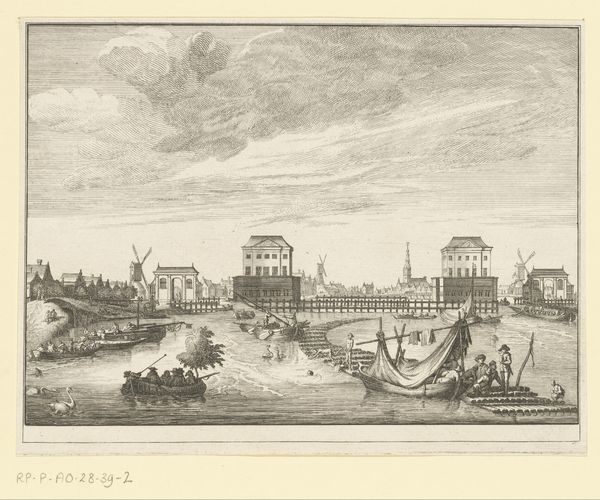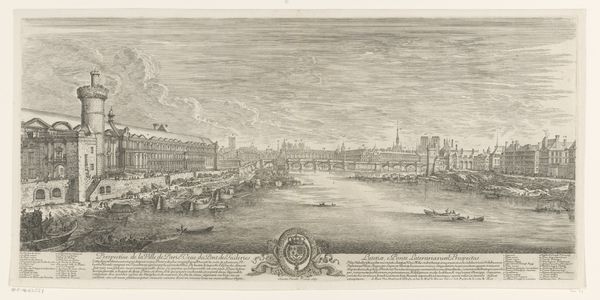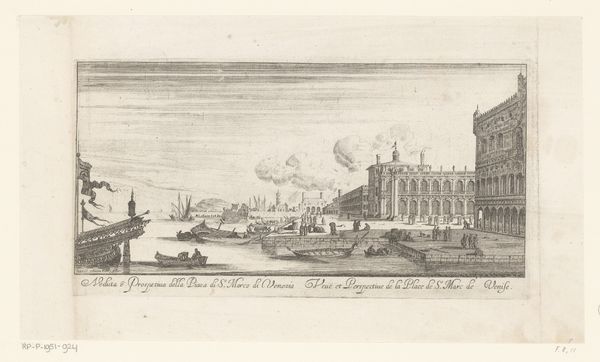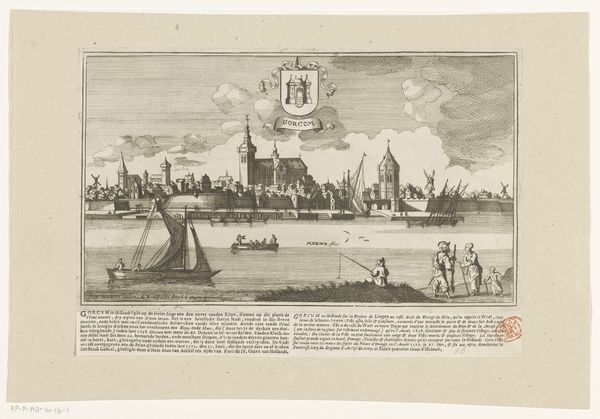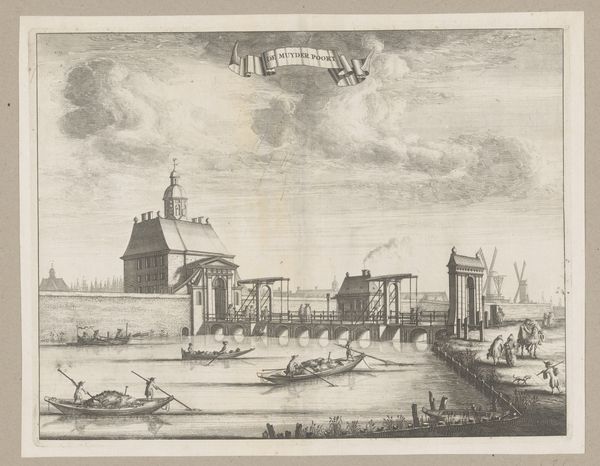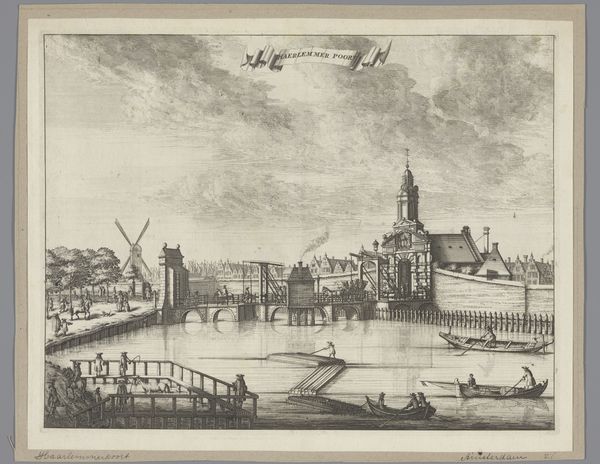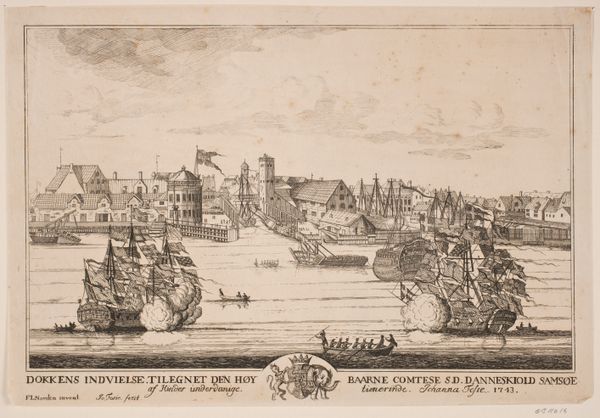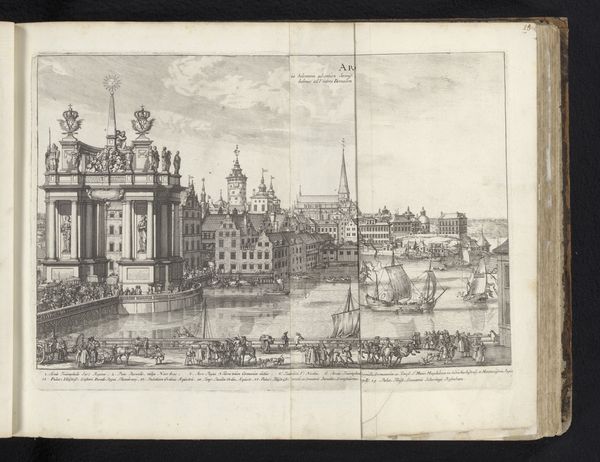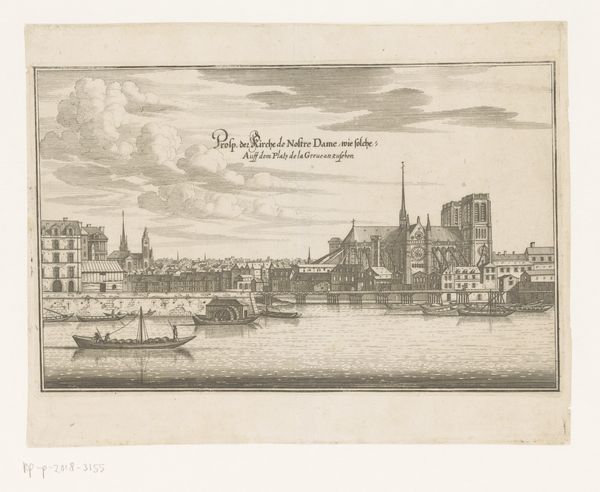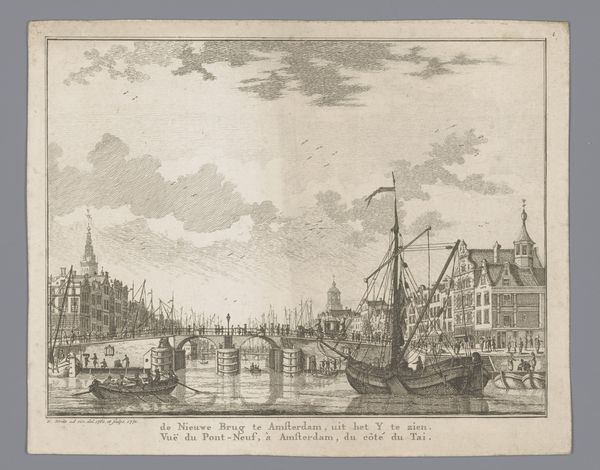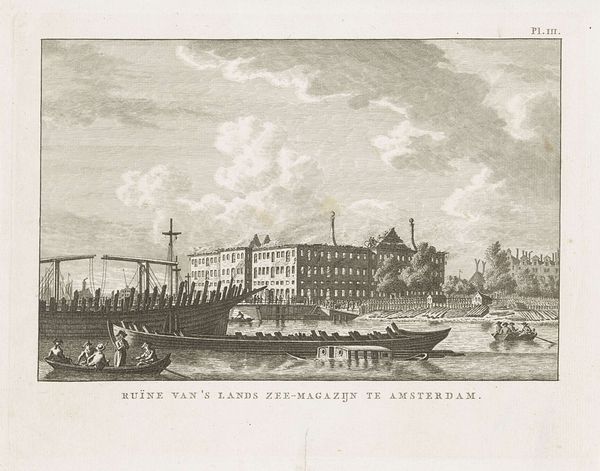
print, engraving
#
baroque
# print
#
landscape
#
cityscape
#
engraving
Dimensions: height 275 mm, width 348 mm
Copyright: Rijks Museum: Open Domain
Curator: This print by Bernard Picart from 1730, called "View of the Two Blockhouses in the Amstel," presents us with a meticulous cityscape, almost surgically precise. Editor: My initial impression? Calm, reflective—a day for measured thoughts on the water. Everything is so... tidy. Is that baroque I’m sensing, or is it just the formal attire on the people in the boats? Curator: It flirts with the Baroque in its ornamentation, particularly in the cartouche above, but remains primarily a detailed landscape. Notice the careful arrangement of elements; the symmetry of the blockhouses mirroring each other, bisected by the river’s flow. Consider the composition and line work – Picart truly dissected Amsterdam. Editor: It's not a photograph, is it, though I wouldn't be surprised! A photograph that decided to dream, maybe. The water even seems still, glassy, holding up the windmills and buildings, reflecting all of those tiny, little goings on. So controlled though; a vision almost too pristine. Curator: Indeed, the artist meticulously constructs an almost utopian view. Structurally, we can consider how the various planes intersect—the foreground boats drawing us into the middle ground, then the background buildings— all organized to create depth and, arguably, a sense of order and prosperity. The engraving medium emphasizes that, as does the limited value range which creates a flattened sense of space. Editor: Do you think he missed out on some of Amsterdam's soul with this sanitised outlook, that he tried to capture some higher ideal instead? Still though, it speaks, just quietly. Curator: It seems, rather, Picart immortalised a perspective, almost staged, highlighting power through visual rhetoric, rather than documentary realism. The composition almost tells a story, a controlled narrative, reinforcing particular ideas and hierarchies. Editor: I see your point. But ultimately, it leaves me dreaming of a bygone age. Curator: I find it a testament to how we curate memories through images— carefully framed and imbued with intentionality, whether or not reality always aligned. Editor: So we find a structured illusion! Food for thought on this tranquil, illusory day on the Amstel.
Comments
No comments
Be the first to comment and join the conversation on the ultimate creative platform.
